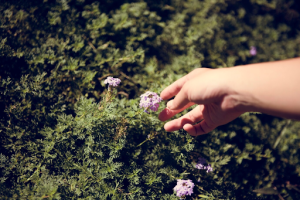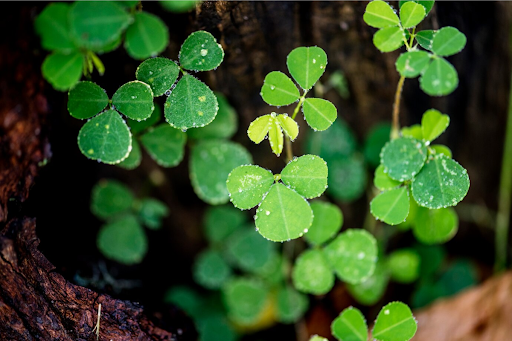Introduction
Clover is a special type of plant that many people love to have in their gardens and lawns. It’s not just pretty; it helps keep the soil healthy and provides food for bees. However, sometimes clover can face tough times, especially when the weather gets hot and dry. This can make it look brown and lifeless, leading many to wonder, “When clovers die dry, do they grow back?” The good news is that clover is very resilient! This means it can survive tough conditions by going into a state called dormancy.
During dormancy, clover’s roots stay alive underground, waiting for the right time to come back to life. Understanding how clover’s dormant roots revive after dry spells is important for gardeners who want to keep their lawns lush and green. In this article, we will explore the amazing ways clover can bounce back, the signs that tell us it’s still alive, and the best ways to care for it. Get ready to learn how this remarkable plant can thrive even in challenging conditions!
What is Clover?
Clover is a small, green plant that is loved by many for its pretty leaves and flowers. There are different types of clover, with white clover and red clover being the most common. People use clover in their gardens because it grows quickly and helps keep the soil healthy. Clover is great for attracting bees and other helpful insects, making it a favorite among gardeners who want to support wildlife.
One of the coolest things about clover is that it can survive tough weather, especially when it gets dry. When a clover faces dry conditions, it goes into a resting state called dormancy. During this time, the roots stay alive underground, waiting for rain or cooler weather to return. Understanding clover resilience helps gardeners know how to care for it and keep their lawns looking beautiful, even during dry spells.
Understanding Dormancy in Clover
Dormancy in clover is an amazing survival trick that helps the plant get through tough times. When the weather gets too hot and dry, clover can’t get enough water. To survive, it goes into a resting state called dormancy. During this time, the leaves may turn brown, and the plant looks dead, but the roots are still alive underground. This is important because clover’s roots store nutrients and water, keeping the plant ready to come back to life.
When the rain returns or the weather cools down, the roots start to grow again, and new leaves pop up. This ability to bounce back is what makes clover resilient. Understanding dormancy helps gardeners know that even if their clover looks brown, it’s just waiting for the right conditions to thrive again. Caring for clover during dry spells ensures that it can revive when the weather improves.
Factors Affecting Clover Recovery After Dry Spells

Several factors play a big role in how well clover can recover after dry spells. First, the quality of the soil is important. Healthy soil that holds moisture allows clover roots to access the water and nutrients they need to grow again. Second, weather conditions, like rainfall and temperature, greatly influence clover recovery. If it rains shortly after a dry spell, clover can bounce back quickly. However, if the weather remains hot and dry for too long, recovery may be slow or even impossible.
Additionally, how you care for your clover also matters. Regular watering and avoiding heavy foot traffic on the lawn can help the plants recover faster. Using natural fertilizers can give clover the extra nutrients it needs to thrive. Understanding these factors helps gardeners take better care of their clover, ensuring it can revive and stay green even after tough dry conditions.
Best Practices for Maintaining Clover Health
To keep clover healthy and strong, there are some simple best practices you can follow. First, make sure to water your clover regularly, especially during dry spells. Clover loves moisture, and providing enough water helps it thrive. Second, mowing the clover at the right height is important. Cutting it too short can stress the plant, while keeping it around two to three inches tall encourages healthy growth. Additionally, using natural fertilizers can give clover the nutrients it needs to stay green and vibrant.
Another great tip is to avoid compacting the soil by limiting heavy foot traffic on your clover lawn. This helps the roots get enough air and water. Lastly, if you notice any weeds, try to remove them quickly, as they can compete with clover for nutrients. By following these best practices, you can support clover resilience and ensure it recovers well after dry spells, keeping your garden looking beautiful.
Common Myths About Clover Resilience
There are many myths about clover resilience that can confuse gardeners. One common myth is that clover dies completely during dry spells and cannot come back. In reality, clover goes into a dormant state, allowing its roots to survive underground. This means that even when it looks brown and lifeless, clover is still alive and just waiting for the right conditions to grow again. Another myth is that clover needs a lot of water to survive. While clover loves moisture, it is surprisingly drought-tolerant and can withstand dry periods by resting its roots.
Some people also believe that clover attracts too many pests. However, clover can actually help control pests by attracting helpful insects like bees and ladybugs. Understanding these myths helps gardeners care for their clover better and appreciate its amazing resilience. By knowing the truth about clover, you can support its growth and enjoy a healthy, green lawn all year round.
FAQ’s
Q1: What is clover resilience?
Clover resilience refers to the plant’s ability to survive tough conditions, like drought, by going into a dormant state.
Q2: How do clover roots survive dry spells?
During dry spells, clover roots remain alive underground, storing nutrients and water until conditions improve.
Q3: How can I tell if my clover is dormant or dead?
Dormant clover may appear brown and lifeless, but the roots are still alive. If it stays brown for an extended period without recovery, it may be dead.
Q4: What conditions help clover recover after a drought?
Adequate rainfall, cool temperatures, and healthy soil conditions support clover recovery after a dry spell.
Conclusion
In conclusion, understanding clover resilience and how dormant roots revive after dry spells is essential for anyone who wants a beautiful garden or lawn. Clover is a remarkable plant that can survive tough conditions by going dormant, allowing its roots to remain alive underground. When the weather improves, such as proper watering and mowing, gardeners can help their clover thrive even during dry periods.
It’s also important to debunk common myths about clover, so you can appreciate its unique abilities. With this knowledge, you can support your clover’s recovery and enjoy its many benefits, like attracting bees and enriching the soil.
Read More : Benefits of Crimson Clover Cover Crops

